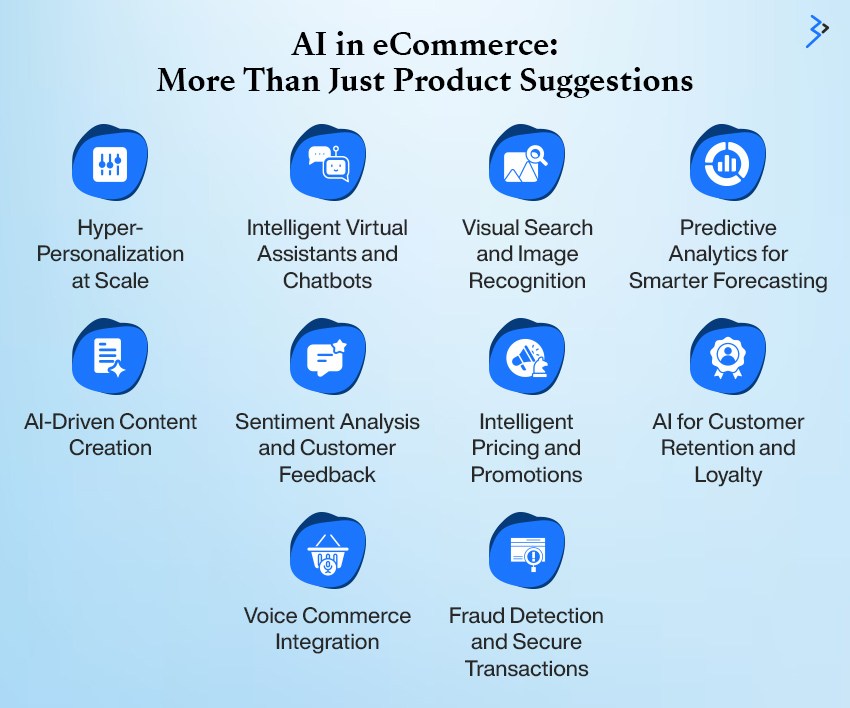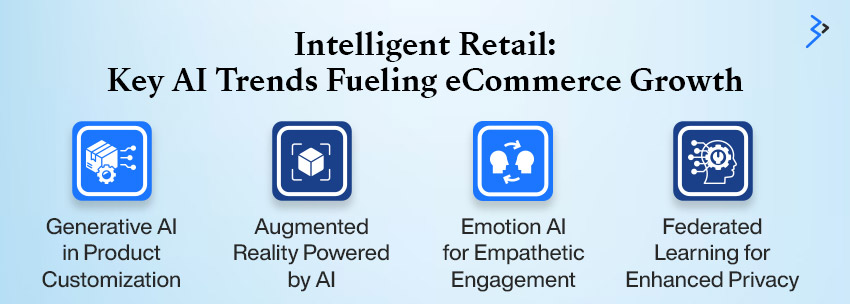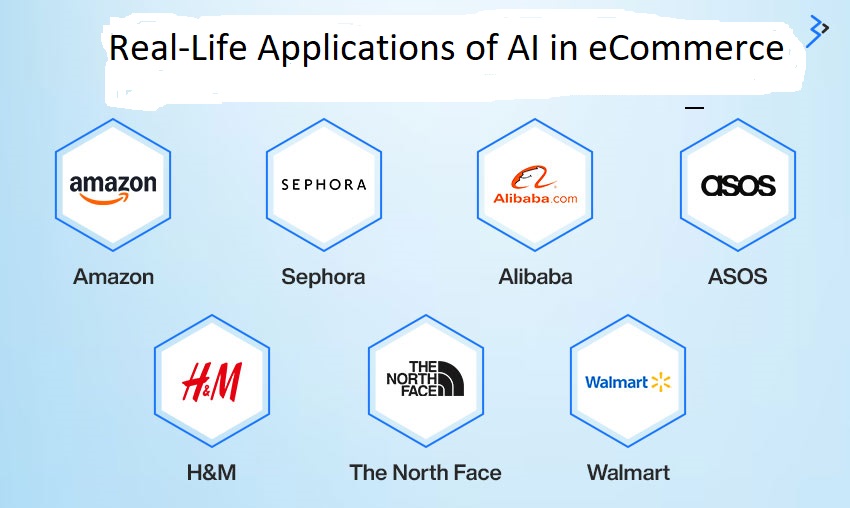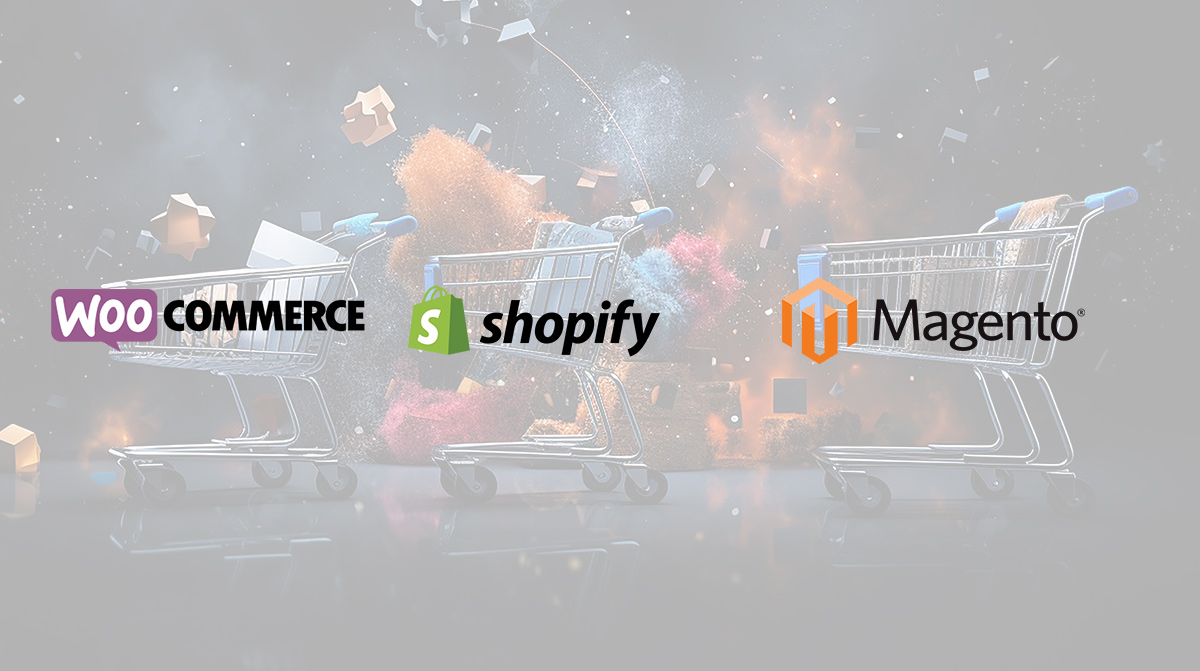The AI Revolution is Not Just Coming – It’s Already Here
Let’s say you’re browsing your favorite eCommerce site and just as you start thinking about a product, it’s already on your screen. A chatbot pops up, offering a limited-time deal tailored just for you. Your order arrives the next day, perfectly packaged, and you get a follow-up email with suggestions that seem to read your mind. This isn’t magic. It’s AI – and it’s transforming eCommerce as we know it.
For years, AI in eCommerce was synonymous with product recommendations. But today, AI is moving far beyond that. Advanced AI strategies are reshaping how brands engage customers, from predictive analytics to personalized experiences and intelligent automation.
In this in-depth guide, let’s discuss the transformation AI is bringing to eCommerce and how businesses can harness its power to build stronger, smarter, and more profitable customer relationships.
AI in eCommerce: More Than Just Product Suggestions

AI is doing much more than just suggesting what to buy next—it’s quietly transforming every corner of eCommerce. From predicting what customers want before searching to streamlining operations behind the scenes, AI is making online shopping smarter, faster, and more personal.
In this section, we’ll explore how AI is reshaping the e-commerce experience far beyond simple recommendations, creating value for shoppers and retailers alike.
1. Hyper-Personalization at Scale
AI now enables retailers to personalize experiences not just based on segments but down to the individual customer. It processes massive datasets in real time to adjust messaging, promotions, and product displays on the fly.
- Behavioral Analysis: AI tools track user behavior across multiple channels to understand preferences.
- Dynamic Content: From homepages to emails, content adapts in real-time to each user.
- Psychographic Targeting: Going beyond demographics, AI analyzes values, interests, and attitudes.
Example: Stitch Fix uses AI to analyze style preferences and sends hand-picked clothing recommendations monthly.
Benefits: Increased conversions, reduced churn, and enhanced loyalty.
2. Intelligent Virtual Assistants and Chatbots
AI-powered chatbots are no longer just scripted FAQ bots. Today’s virtual assistants understand natural language, anticipate needs, and provide real-time support.
- Natural Language Processing (NLP): Understands user intent and responds conversationally.
- 24/7 Availability: Always-on support that improves customer satisfaction.
- Proactive Engagement: Initiates conversations based on browsing behavior.
Example: Sephora’s chatbot provides beauty advice, appointment bookings, and product suggestions through Messenger.
Benefits: Reduced support costs, faster issue resolution, and higher customer satisfaction.

3. Visual Search and Image Recognition
Modern shoppers often want what they see. AI-powered visual search bridges the gap between inspiration and purchase.
- Image-Based Queries: Users upload photos to find similar products instantly.
- Style Matching: AI identifies color, patterns, and design to suggest matches.
- Augmented Reality (AR): Allows customers to visualize products in real-world environments.
Example: ASOS uses visual search so users can upload an outfit photo and get similar results.
Benefits: Shorter purchase journeys, improved discoverability, and enhanced user experience.
4. Predictive Analytics for Smarter Forecasting
AI doesn’t just react – it predicts. With predictive analytics, retailers can anticipate customer needs and market trends.
- Customer Lifetime Value (CLV): AI forecasts how much a customer is likely to spend.
- Churn Prediction: Identifies when a customer is likely to leave and triggers retention strategies.
- Demand Forecasting: Anticipates inventory needs based on seasonality, trends, and external factors.
Example: Amazon uses predictive analytics to anticipate what products customers will buy and when.
Benefits: Better inventory management, reduced waste, and more efficient marketing.
5. AI-Driven Content Creation
Content is king – and now, AI is the kingmaker. AI tools are writing product descriptions, creating ad copy, and even generating videos using an AI video generator.
- Natural Language Generation (NLG): Tools like GPT can generate human-like copy.
- Automated Product Descriptions: Faster content creation at scale.
- Dynamic Ad Copy: Personalized ads based on real-time data.
Example: eBay uses AI to write thousands of unique product descriptions instantly.
Benefits: Faster time-to-market, consistent tone, and cost efficiency.
6. Sentiment Analysis and Customer Feedback
AI helps brands understand how customers feel, not just what they say. Sentiment analysis scans reviews, comments, and social media to gauge public opinion.
- Emotion Detection: AI identifies happiness, frustration, or confusion.
- Brand Monitoring: Tracks customer sentiment over time.
- Feedback Loop: Allows rapid response to negative trends.
Example: Nike uses sentiment analysis to refine campaigns and respond proactively.
Benefits: Improved brand perception, better customer relationships, and real-time responsiveness.
7. Intelligent Pricing and Promotions
AI dynamically adjusts prices and promotions based on demand, competitor activity, and customer behavior.
- Dynamic Pricing: Prices update in real-time to maximize sales and margins.
- Personalized Discounts: Offers based on purchase history and preferences.
- Competitive Benchmarking: Tracks and responds to competitor pricing strategies.
Example: Walmart uses AI to set optimal prices across millions of products.
Benefits: Higher revenue, competitive edge, and improved conversion rates.
8. AI for Customer Retention and Loyalty
Retaining customers is more cost-effective than acquiring new ones. AI enhances loyalty programs and keeps customers coming back.
- Personalized Loyalty Offers: Tailored to each customer’s habits and preferences.
- Win-Back Campaigns: Triggered by inactivity or abandoned carts.
- Customer Journey Mapping: Understands long-term engagement trends.
Example: Starbucks’s AI-driven Rewards program uses data to personalize offers.
Benefits: Increased repeat purchases, brand loyalty, and customer lifetime value.
9. Voice Commerce Integration
Voice assistants like Alexa and Google Assistant are opening new doors for shopping experiences.
- Voice Search Optimization: Prepares content and product listings for voice queries.
- Voice-Powered Purchases: Enables shopping with simple voice commands.
- Hands-Free Support: Provides convenient and accessible customer service.
Example: Walmart customers can order groceries via voice commands using Google Assistant.
Benefits: Enhanced accessibility, futuristic UX, and faster transactions.
10. Fraud Detection and Secure Transactions
As online transactions increase, so does the risk of fraud. AI ensures safe shopping experiences.
- Anomaly Detection: Flags unusual behavior patterns in real-time.
- Biometric Authentication: Uses facial or fingerprint recognition for added security.
- Risk Scoring: Predicts and prevents fraudulent transactions.
Example: PayPal uses AI to monitor transactions and block suspicious activity instantly.
Benefits: Customer trust, reduced chargebacks, and improved compliance.
Read More – AI-Powered Enhancements: How Shopify’s AI Revolution is Transforming eCommerce
Intelligent Retail: Key AI Trends Fueling eCommerce Growth

AI is transforming eCommerce in ways we once only imagined. From personalized recommendations to smart inventory management, today’s AI trends are making online shopping faster, more innovative, and more intuitive.
Let’s explore the key innovations reshaping digital retail and setting the stage for a more intelligent shopping experience.
Generative AI in Product Customization
Generative AI is transforming the way products are designed and personalized. Using advanced models, eCommerce platforms now allow users to co-create products—from apparel patterns to interior decor styles. These AI systems analyze individual preferences, browsing history, and current trends to generate unique product recommendations or designs, increasing customer engagement and satisfaction.
Example: Nike and Adidas now offer AI-powered sneaker customization where customers can modify colors, patterns, and even materials with real-time previews powered by generative models.
Augmented Reality Powered by AI
AI-enhanced AR is revolutionizing virtual try-ons and product visualization. By leveraging computer vision and machine learning, eCommerce platforms can provide realistic previews of how a piece of furniture fits in a room or how sunglasses look on a specific face shape.
Example: IKEA’s app uses AI-driven AR to help customers visualize furniture in their space, increasing buyer confidence and reducing return rates.
Emotion AI for Empathetic Engagement
Emotion AI analyzes customer facial expressions, voice tone, and text inputs to gauge emotions during interactions. This enables brands to respond empathetically and tailor real-time customer experiences.
Use Case: When detecting frustration, AI-powered customer service bots can shift tone or escalate issues to human agents, ensuring a smoother and more humanized interaction.
Federated Learning for Enhanced Privacy
Federated learning allows AI models to be trained across multiple decentralized devices without compromising user data privacy. In eCommerce, platforms can improve recommendation algorithms without collecting or storing sensitive user information centrally.
Impact: This trend is especially important with increasing data regulations (like GDPR). Companies can offer personalized experiences while respecting user privacy, thereby enhancing trust.
Read More – How Retail Businesses Use AEM for eCommerce and Customer Engagement
Real-Life Applications of AI in eCommerce: 7 Remarkable Examples That Prove AI Isn’t Just a Buzzword

Artificial Intelligence is no longer a distant concept from sci-fi films—it’s your behind-the-scenes personal shopper, supply chain manager, and digital sales assistant, all rolled into one. In the world of eCommerce, AI is evolving the customer experience and making operations smarter, smoother, and incredibly scalable.
Let’s examine seven real-life AI applications that are redefining how we shop, sell, and succeed in the digital marketplace.
1. Amazon: Where AI Knows What You Want Before You Do
Amazon doesn’t just lead eCommerce—it practically wrote the AI playbook. Its deep learning-based recommendation engine is responsible for a jaw-dropping 35% of total sales. That’s not just impressive; that’s borderline mind-reading.
AI features that make Amazon a powerhouse:
- Personalized product recommendations based on browsing history, purchases, and user behavior
- Dynamic pricing that adjusts in real-time to market conditions
- Warehouse robotics for faster and more accurate order fulfillment
- Supply chain forecasting that anticipates demand before you even click “add to cart”
- Fraud detection that’s constantly learning from new patterns
- Alexa voice shopping—because even talking to machines now gets you faster delivery
Well, who knows—if Amazon gets any smarter in the future, it might start shopping for you before you even realize you’re out of toothpaste.
2. Sephora: The Beauty of AI and Augmented Reality
Who needs a trip to the mall when Sephora’s Virtual Artist app lets you try on lipstick from your couch? Powered by AI and facial recognition, this tool has revolutionized how beauty products are bought online.
How Sephora blends AI and beauty:
- Virtual try-ons that match makeup shades to your skin tone using AR
- Chatbots that offer real-time support and personalized suggestions
- Customer engagement tools that reduce hesitation and boost conversions
3. Alibaba: Fashion Meets Intelligence with Smart Mirrors
China’s eCommerce titan Alibaba is literally bringing the magic mirror to life. In their FashionAI-powered smart stores, mirrors recommend outfits based on what you’re trying on.
Fashion-forward AI features:
- Intelligent garment tagging that helps track inventory efficiently
- Smart mirrors offering outfit suggestions and product pairings
- AI-driven logistics that forecast demand and manage stock across locations
Mirror, mirror on the wall, who’s the most AI-savvy retailer of all? Alibaba just might be.
Read More – How is AI-led Adobe Solution Shaping the Future of eCommerce
4. ASOS: Find It, Snap It, Shop It
Scrolling through Instagram and spotting someone wearing the perfect boy’s suit? ASOS lets you find a match with its visual search tool—just upload a photo and AI takes it from there.
Here’s how ASOS visualizes success:
- Image-based search that instantly finds similar products
- Improved UX with minimal effort for the shopper
- Higher conversions thanks to seamless discovery
Say cheese—and say goodbye to endless scrolling.
5. H&M: Predicting What’s Hot Before It’s Even Cool
H&M isn’t guessing what’s trending—they’re predicting it. Using machine learning development, the global fashion brand adjusts its stock and styles based on emerging trends, regional preferences, and historical data.
AI perks in fashion forecasting:
- Trend prediction through data analysis from past purchases
- Localized inventory management to suit different tastes worldwide
- Reduced waste by stocking what sells and ditching what doesn’t
Fashion forecast: 100% chance of algorithm-approved outfits.
6. The North Face: Chat With Watson Before You Climb That Mountain
Outdoor gear gets a futuristic twist with IBM Watson acting as a virtual shopping assistant for The North Face. Ask a question like, “What jacket should I wear for hiking in Colorado?” and Watson delivers a tailored response.
Adventure-ready AI features:
- Conversational interface that understands natural language
- Context-aware suggestions based on location, weather, and activity
- Improved customer confidence in product selection
Because climbing mountains is hard, but picking the right jacket shouldn’t be.
7. Walmart: Retail Analytics That Really Stack Up
Walmart’s approach to AI isn’t flashy—it’s functional, and that’s what makes it brilliant. Their Intelligent Retail Lab deploys AI for real-time shelf inventory, optimizing store layouts, and predicting foot traffic patterns.
How Walmart stays retail-ready:
- Inventory robots scanning shelves to check stock levels
- Layout optimization using heatmaps of customer movement
- Customer demand forecasting for smoother operations
Fun fact: Even their shelves are smarter than the average shopping cart.
Final Thoughts: AI Is the MVP of Modern Commerce
From makeup try-ons to smart mirrors and search-by-photo features, AI is doing more than just analyzing data—it’s creating delightful shopping experiences and operational miracles. These companies aren’t just using AI for tech’s sake; they’re using it to solve real problems, anticipate customer needs, and build loyalty through personalization.
So, what can we learn from these trailblazers?
- AI isn’t optional—it’s essential for scaling eCommerce.
- Personalization is the holy grail, and AI is the key.
- Efficiency gains aren’t just for your warehouse—they improve customer satisfaction too.
- A little machine learning can go a long way in making shopping more human.
Pro tip: If your eCommerce business isn’t using AI yet, it’s not a question of if—it’s when. And if you’re waiting until your competitors do it first… well, they probably already have.
Related Articles
-
What Types of E-commerce Business Models Drive Tangible Outcomes?
Each internet store has its own unique business plan. Visitors to a website generate revenue for many businesses. Beginners with little or no experience in the field face particular difficulties
-
The Ultimate Clash of eCommerce Giants: WooCommerce vs Magento vs Shopify
You might be surprised why only these three solutions are considered and compared over here. Well, these are the most famous eCommerce platforms with over 2.5M online stores in the
-
Prestashop Development – Performance Enhancement Tips
Prestashop – one of the big ecommerce solutions of today provides you with easy ways to integrate the most popular payment gateways like Google Checkout, Skrill, Paypal etc. It’s written




